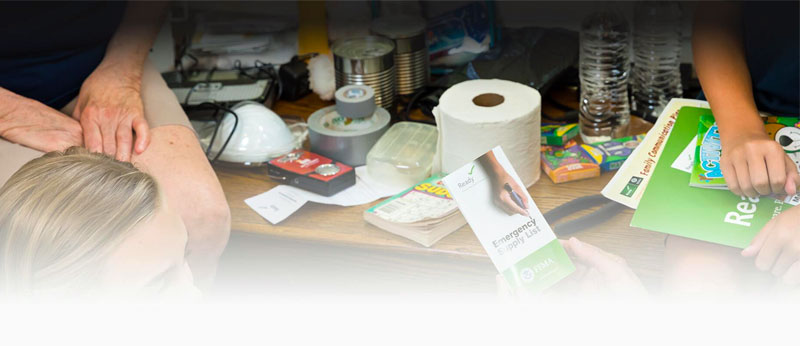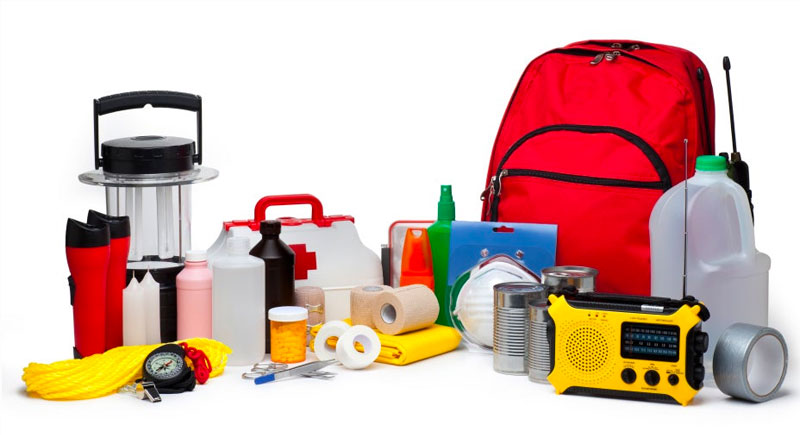
Hurricane experts believe the City of New Orleans, Louisiana dodged a bullet when Tropical Storm Barry failed to develop into a major hurricane as predicted, but a Houston, Texas, emergency room physician says that should serve as a warning to all Texans.
Dr. Kanti Bansal, MD, an emergency room physician with SignatureCare Emergency Center, said even though Texans did not have to deal with Tropical Storm Barry, they should take this as an opportunity to prepare for the next one that may hit the region.
“Tropical Storm Barry made landfall in Louisiana over the weekend but if it had come to Texas, how prepared are Texas families to deal with the devastation?” Dr. Bansal asked.
He called on Texans to use this opportunity to ensure their emergency kits are in order.

“This is vitally important. For those that already have emergency kits, this is the right time to ensure they are in order, that every item that should be included, is part of the kit.”
For those families who may not have thought of having emergency kits for their families, Dr. Bansal said this is a good time to put one together.
“It is like having insurance. You do not want to wait until you need an emergency kit to put one together. You want to make sure you have one in place before you need it,” he said.
The board-certified ER doctor said items that must be in an emergency kit include water (one gallon of water per person, per day), non-perishable food, battery-powered radio, flashlight, first aid kit and extra batteries.
“This list is not exhaustive. You can add other items as needed but keep in mind that you may need to move with the kit so do not make it heavy. Add only the essential items your family will need,” he said.
According to the U.S. Department of Homeland Security (DHS), other items that should be in a standard emergency kit include prescription and non-prescription medications, infant formula, diapers, wipes, pet food and extra water for pets, cash, important documents, blankets, and more.
(When disaster strikes, you want to be ready to go at a moment’s notice. Having a Go Bag ready for emergencies is a simple solution. Find out more information on how to prepare for emergencies at Ready.gov. Courtesy of FEMA and YouTube.)
Build A Kit
According to Ready.gov, make sure your emergency kit is stocked with the items on the checklist below.
Most of the items are inexpensive and easy to find, and any one of them could save your life. Headed to the store?
Click here to Download a printable version to take with you.
Once you take a look at the basic items, consider what unique needs your family might have, such as supplies for pets, or seniors.
After an emergency, you may need to survive on your own for several days.
Being prepared means having your own food, water and other supplies to last for at least 72 hours.
A disaster supplies kit is a collection of basic items your household may need in the event of an emergency.

Basic Disaster Supplies Kit
To assemble your kit, store items in airtight plastic bags and put your entire disaster supplies kit in one or two easy-to-carry containers such as plastic bins or a duffel bag.
A basic emergency supply kit could include the following recommended items:
-
Water – (one gallon of water per person per day for at least three days, for drinking and sanitation)
-
Food – at least a three-day supply of non-perishable food
-
Battery-powered or hand crank radio and a NOAA Weather Radio with tone alert
-
Flashlight
-
First aid kit
-
Extra batteries
-
Whistle to signal for help
-
Dust mask to help filter contaminated air and plastic sheeting and duct tape to shelter-in-place
-
Moist towelettes, garbage bags and plastic ties for personal sanitation
-
Wrench or pliers to turn off utilities
-
Manual can opener for food
-
Local maps
-
Cell phone with chargers and a backup battery
(This video brought to you by the Ready Campaign and Ad Council shows people with access and functional needs taking charge to prepare themselves and their families for emergencies. This video is available with open caption and closed caption, certified deaf interpreter (CDI) and open caption with CDI. “Be Informed. Make a Plan. Build a Kit. Get Involved.” Visit ready.gov/myplan for more information on preparing. Courtesy of FEMA and YouTube.)
Additional Emergency Supplies
Consider adding the following items to your emergency supply kit based on your individual needs:
-
Prescription medications
-
Non-prescription medications such as pain relievers, anti-diarrhea medication, antacids or laxatives
-
Glasses and contact lense solution
-
Infant formula, bottles, diapers, wipes, diaper rash cream
-
Pet food and extra water for your pet
-
Cash or traveler’s checks
-
Important family documents such as copies of insurance policies, identification and bank account records saved electronically or in a waterproof, portable container
-
Sleeping bag or warm blanket for each person
-
Complete change of clothing appropriate for your climate and sturdy shoes
-
Household chlorine bleach and medicine dropper to disinfect water
-
Fire extinguisher
-
Matches in a waterproof container
-
Feminine supplies and personal hygiene items
-
Mess kits, paper cups, plates, paper towels and plastic utensils
-
Paper and pencil
-
Books, games, puzzles or other activities for children
Maintaining Your Kit
After assembling your kit remember to maintain it so it’s ready when needed:
-
Keep canned food in a cool, dry place
-
Store boxed food in tightly closed plastic or metal containers
-
Replace expired items as needed
-
Re-think your needs every year and update your kit as your family’s needs change.
(Get the kids involved too! This video teaches youth about making a family communications plan and emergency kit. The video covers what questions to ask when making a plan, what to put in an emergency kit, and ideas for getting families together to make a plan or kit. Courtesy of FEMA and YouTube.)
Kit Storage Locations
Since you do not know where you will be when an emergency occurs, prepare supplies for home, work and vehicles.
-
Home:
-
Keep this kit in a designated place and have it ready in case you have to leave your home quickly.
-
Make sure all family members know where the kit is kept.
-
-
Work:
-
Be prepared to shelter at work for at least 24 hours.
-
Your work kit should include food, water and other necessities like medicines, as well as comfortable walking shoes, stored in a “grab and go” case.
-
-
Vehicle:
-
In case you are stranded, keep a kit of emergency supplies in your car.
-
Dr. Bansal said although Texas may not see a hurricane this season, he said every family should be prepared because it is impossible to accurately predict what will happen.
“You can’t tell what will happen. We may go through the season without getting hit or we may get one or more hurricanes. The best thing to do is to ensure your family is prepared,” added Dr. Bansal.

















